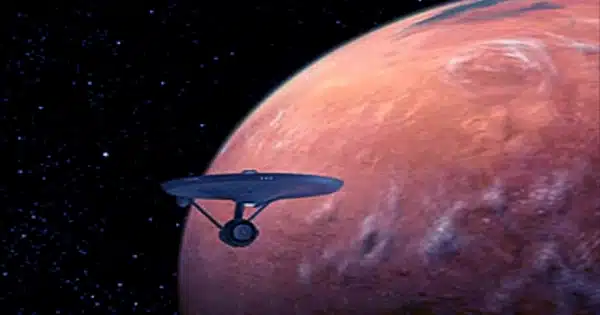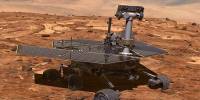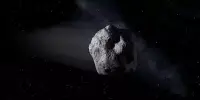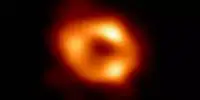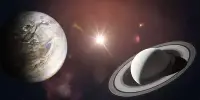Scientists Katherine Laliotis and Jennifer Burt didn’t intend for their recent investigation into exoplanets in other solar systems to enrage Trekkies.
They claimed that the information simply led them and the rest of their study team to the most reasonable conclusion possible.
A article released in Monthly Notices of the Royal Astronomical Society five years ago(Opens in a new tab) announced the discovery of a planet orbiting a star 16 light-years from Earth. It was the star 40 Eridani. Although that moniker may not be well-known to everyone, Star Trek aficionados will recognize it as the host star of Spock’s made-up planet, Vulcan.
The problem is that the new crew discovered the finding was probably an error following a reanalysis. They couldn’t just let Spock live a long life and thrive in the actual world, that’s correct. They had to go and destroy his world of origin.
We’re sorry about that, Burt said to Mashable. We’ll discover more interesting worlds.
Their study, which has been approved for publishing in The Astronomical Journal, is meant to aid NASA’s upcoming Habitable Worlds Observatory project, which will use a space camera to take pictures of Earth-like worlds orbiting relatively nearby stars. The initiative, which has been in development for years, seeks to investigate these idyllic worlds for life. It is expected to debut in the 2040s.
The team studied a sizable public data release to examine exoplanets in the southern hemisphere. Their objective was to evaluate some of the top candidates for the upcoming observatory. However, they discovered that a few previously known exoplanets were probably mistakes during the procedure.
One of them was the designation given to Planet Vulcan by its initial writers, 40 Eri b. The latest study officially disputes it.
Planet Vulcan ‘discovered’ in 2018
The exoplanet was named by the initial writers in 2018 as the closest super-Earth circling another sun-like star. It was said to be in the habitable zone of the star, twice the size of Earth, with a 42-day year. There is a class of planet known as a super-Earth(Opens in a new browser) that is up to 10 times as massive as our blue marble but is lighter than icy giants like Neptune and Uranus.
In this other Milky Way system, any solid planet would experience a triple sunset(Opens in a new browser) because 40 Eridani contains three stars that revolve around one another.
Radial velocity was used by Laliotis, Burt, and the rest of the new squad to search for potential prospects among solar systems. It is a technique for finding exoplanets that searches for minute variations in the pattern of sunlight as seen from Earth. It is believed that tiny tremors in the light readings are caused by the gravitational pull of a nearby planet.
Not an exoplanet, but characteristics of star activity were discovered by their analysis(Opens in a new browser).
They’ll appear to be planetary signs, but it’s not a planet, said Laliotis, a NASA intern who was involved in the study and is currently pursuing her at The Ohio State University. “It looks like little spots on the star’s surface.”
It is unknown if the initial researchers who discovered the exoplanet and released their findings concur with the new study. The first two writers, who are connected to the University of Florida, were not reachable by Mashable.
Search for Earth-like exoplanets continues
Since news of the new findings circulated, the scientists involved have faced some criticism from admirers, including family members. Laliotis said her father proceeded to give her a lecture in Vulcanian “history,” explaining that the planet was bound for annihilation, but that wasn’t supposed to happen for a couple more millennia.
NASA’s Jet Propulsion Laboratory astronomer Burt claimed that her mother flatly declined to read the piece.
She said, “My mum was a Trekkie. She insisted that I became an astrophysicist for this reason. I watched a lot of “Star Trek” while I was pregnant with you, so obviously that filtered through, she said.
Laliotis said that despite their discoveries, the hunt for Spock’s house can go on. A smaller exoplanet in that star system, perhaps one that is more Earth-like, may be found in the near future thanks to more delicate equipment and sensing techniques, even though they might not have a starship Enterprise to look for it. This planet would be renamed Vulcan.
After all, it would be much too intense for life as we know it if 40 Eri b’s finding were accurate.
There is still a chance that a Vulcan could be present, she added. This suggests that there might be a superior Vulcan there, which is encouraging.
